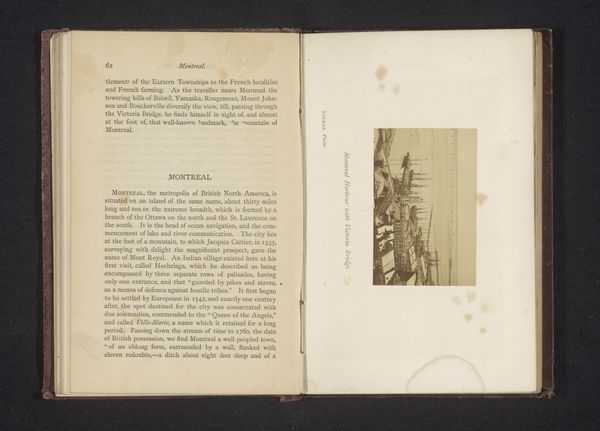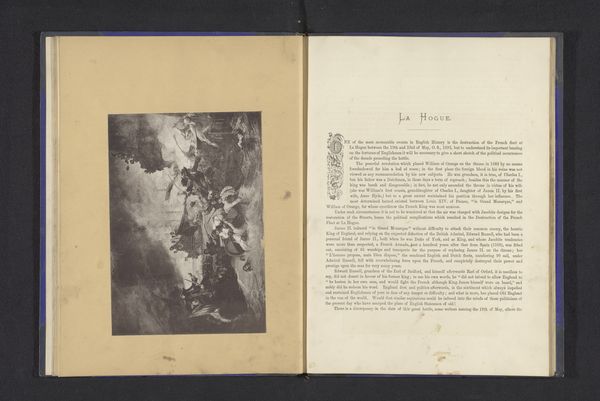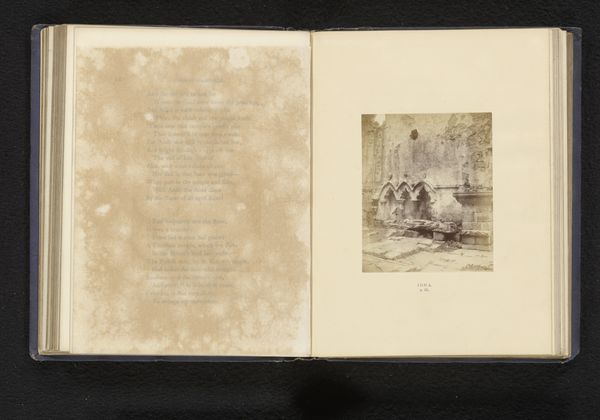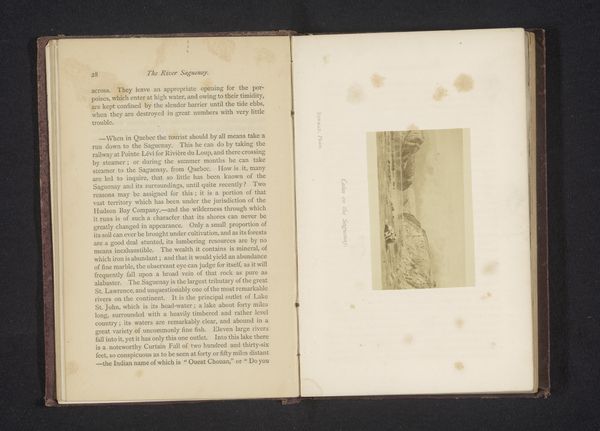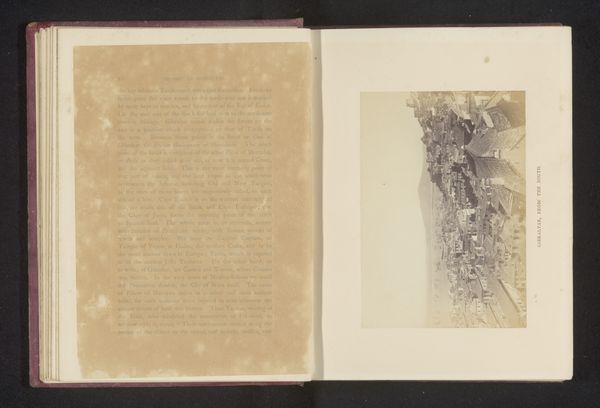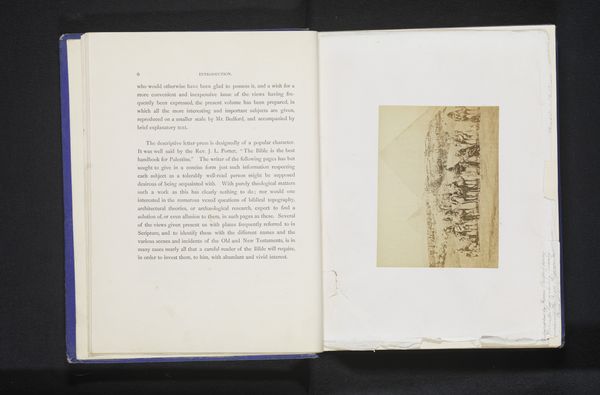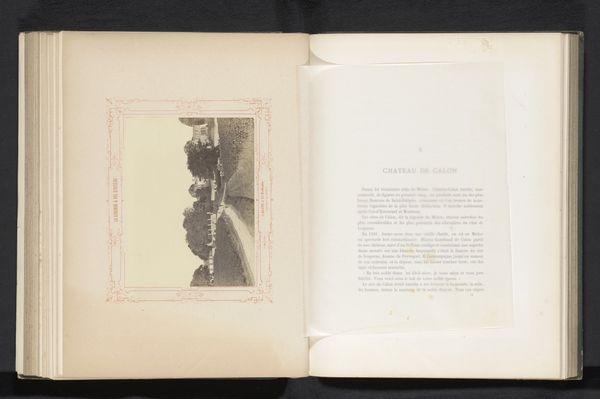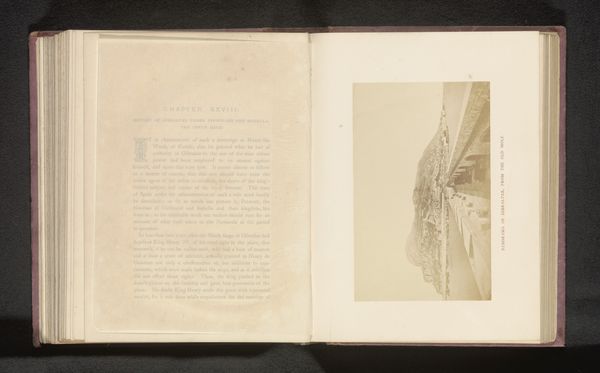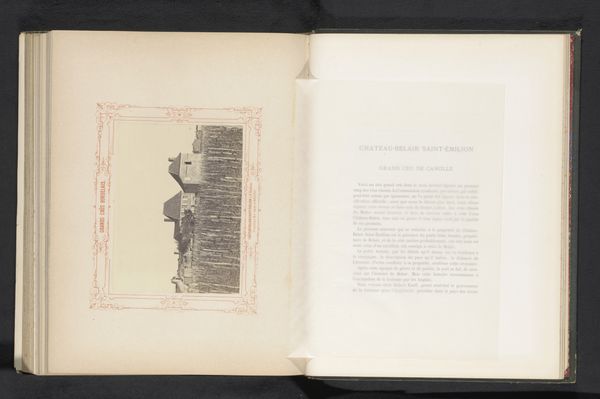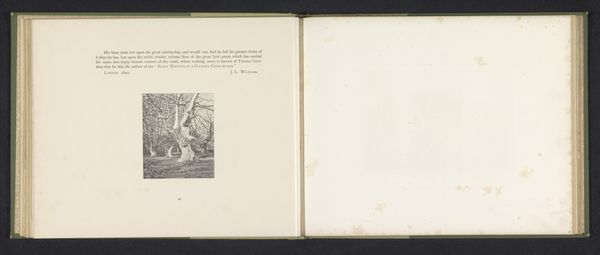
Reproductie van de Victory bij de slag van Trafalgar door Joseph Mallord William Turner before 1881
0:00
0:00
Dimensions: height 155 mm, width 221 mm
Copyright: Rijks Museum: Open Domain
Curator: What we have here is a reproduction of J.M.W. Turner's "The Battle of Trafalgar," created sometime before 1881. It's an engraving, a print on paper, so we're seeing it at a remove from the original painting. Editor: My first impression is of...chaos, really. A swirling vortex of indistinct forms. Is that smoke? It feels turbulent, almost overwhelmingly so. It definitely captures the drama of battle, in a strange, diffused way. Curator: Absolutely. Romanticism reveled in the sublime, the overwhelming power of nature and the intensity of human experience. This print, being a reproduction, adds another layer. Trafalgar was a pivotal moment in British naval history, solidifying British sea power. Turner, working decades later, is not just depicting a battle, he is engaging with a powerful national myth. The print then, mass produced, extends this myth even further. Editor: It's interesting how he abstracts it, isn't it? Instead of precise details, we get a sense of the broader, almost existential struggle. The individual ships seem almost swallowed by the immensity of the scene. It feels less about naval strategy, and more about...fate? Destiny? And in print form, its accessibility democratizes the heroics, a shared history to pass around. Curator: I think you've hit on something important there. The relatively low cost and ease of reproducing engravings in the 19th century allowed Turner's vision of the battle, imbued with Romantic ideals of heroism and sacrifice, to reach a much wider audience. This contrasts with the monumental scale, artistic mastery, and patron-driven exclusivity usually reserved for high art historical painting, a conscious turn for its time. Editor: So, in a way, it's not just about the battle itself, but about how we, as a collective, choose to remember it? Turner offers an emotional and highly dramatic account rather than documentary one. And in a medium meant to be handled and circulated, like a newspaper, it suggests an artwork intended to actively partake in the formation of national narrative. Curator: Exactly! This engraving invites us to contemplate not only the event, but also its role in shaping British identity. Editor: Makes me wonder how future generations will remember events through the lens of mass media. Curator: An apt thought, and one that keeps Turner very much alive and relevant today.
Comments
No comments
Be the first to comment and join the conversation on the ultimate creative platform.
